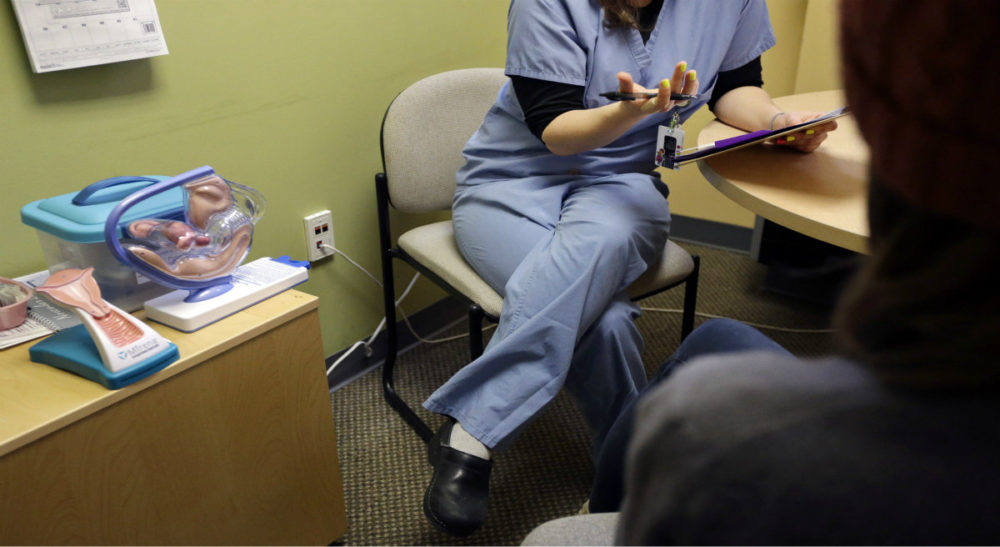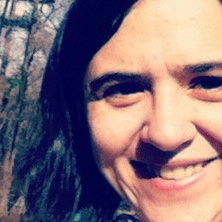Advertisement
What The Buffer Zone Meant To Me

I get a little sad when I think of my second pregnancy. I was 34. It hadn’t exactly been planned, but it was fine. I had just finished graduate school. My husband and I had jobs. I knew my toddler would be a great big brother.
But I felt like something was wrong from the beginning. Since I was approaching 35, we had the quad screening at 11 weeks. At that appointment, on the sixth floor of where we hoped to have the baby, the fetal medicine specialist was concerned. There were large abnormalities. Tears streamed down my cheeks.
The genetic counselor called me and said, “I have news you don’t want to hear,” confirming what my body already knew: something was terribly wrong.
The genetic counselor called me and said, “I have news you don’t want to hear,” confirming what my body already knew: something was terribly wrong. My baby had Trisomy 18, and I knew what that meant: there was a 50 percent likelihood that he or she would be stillborn. If born alive, my baby might survive only hours, days, weeks. Less than 10 percent of such babies have a first birthday, and those who live to adulthood do so with medical and developmental issues that prevent them from living independently.
I knew that to love that baby, I had to let go.
The genetic counselor made the appointment. I couldn’t ask the gender until after we made our decision. I was thankful when she said, “It’s a girl,” in a way that was different than how I had hoped I might one day hear a jubilant nurse say, “It’s a girl!”
When the day finally came, it was raining. I knew the protesters would be outside Brigham and Women’s Hospital. They’re there on Tuesdays and Thursdays, the days they do abortions. Our windows were closed, but as we drove by, I could see their mouths shouting, their signs bobbing. They were calling me a murderer.
I felt better once we were inside, though it was annoying when the woman with the big baby belly asked what we would do for birth control following the procedure. “I wouldn’t want anything to happen that you’re not ready for,” she said. Apart from wishing that she knew why I was there, and that my husband could come back to hold my hand, I felt supported.
It was over quickly.
Three years after that day, I feel let down by the Supreme Court’s ruling against the 35-foot buffer zone around Massachusetts abortion clinics. The buffer zone law was enacted in response to two 1994 murders in Brookline, Mass., the most violent acts against abortion clinics in the U.S.
Our windows were closed, but as we drove by, I could see their mouths shouting, their signs bobbing. They were calling me a murderer.
The Supreme Court's decision might be a win for free speech, but it's a loss for any woman entering a reproductive health clinic, whether to pick up a birth control prescription or do anything else. Because without those buffer zones, she will most certainly be harassed. The High Court's ruling sends a message that women don’t deserve compassion in a time when they may most need it.
There are zones everywhere in our man-made world. In Boston, as in many places, one cannot smoke within a certain number of feet from a building entrance. There are even free speech zones. There are restrictions on free speech at military funerals; demonstrators obtain permits and picket in specified areas. Politicians are able to establish designated protest free zones. You cannot protest on the grounds of the Supreme Court.
Abortion protesters will tell you they are there because they care, and I’m sure they believe that. This does not offer solace to women entering an abortion clinic. Besides, a 35-foot zone isn’t that large. Women can still hear the protesters. They don’t need to be any closer.
Advertisement
For me, and for millions of women, abortion is a loss.
I wish we could support each other rather than fight over lines on the sidewalk. And I wish the Supreme Court had a little more compassion. If those protesters had been closer, I don’t know how I would have coped.
Related:
Cognoscenti: Before The Buffer Zone
